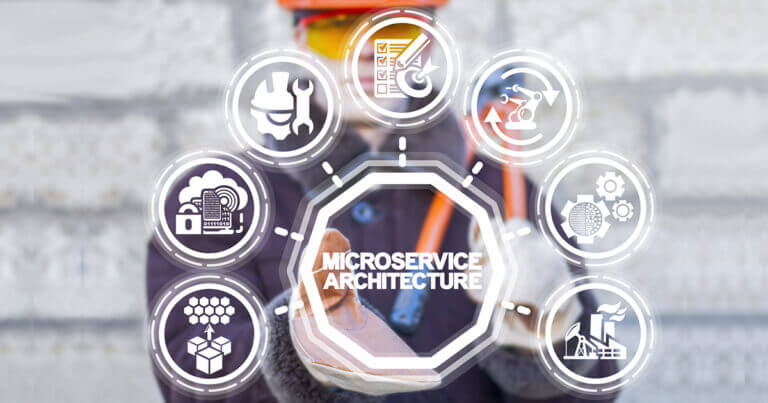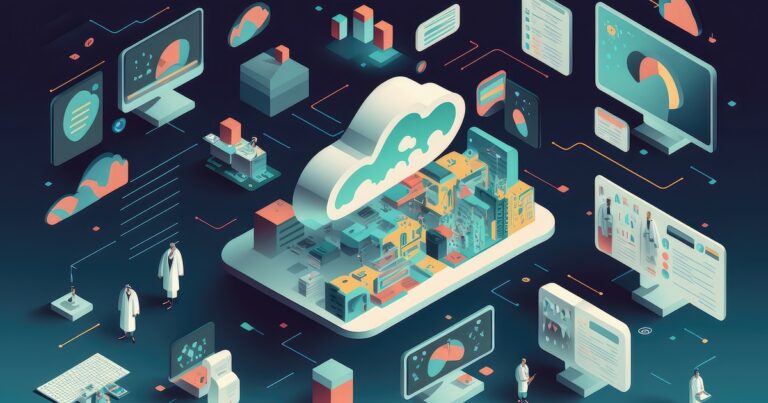Monolith applications are facing several issues when it comes to integrating emerging technologies into their existing systems. IoT, blockchain, AI & ML, and analytics are a few examples of emerging technologies almost every business requires their integration. Unfortunately, there are several organizations that find it difficult to adapt to emerging technologies since their IT infrastructure relies on a legacy system that was not developed keeping in view the continuous business requirements.
Large organizations even have hundreds or thousands of applications in their portfolio that don’t let them move faster in the market. Still, outdated applications and software reportedly make up to 31% of any organization’s technology. For example, banks, retailers and government institutions are using legacy software mainly because legacy apps are more important than modernization in those scenarios when some work always needs to happen.
What Is Application Modernization?
Application modernization is the method of aligning legacy software to your current business needs. The approach allows you to minimize the in-house server footprint and the costs associated with it. As a result application modernization brings businesses greater agility, speed, scalability, reliability, and security.
But, application modernization doesn’t necessarily mean starting from scratch. There are different approaches to rendering application modernization services. Understanding the right approach for your business needs could help you save costs and bring you maximum return on investment.
Application Modernization Process
Over time and with continuous business innovation, software’s infrastructure and architecture need update and integration of new features. There are five processes of executing updates in the application as a part of application modernization. Let’s get familiar with the five approaches used for application modernization and understand case scenarios when each are used:
1. Rehosting
What is it?
Rehosting helps set the base of application modernization. Rehosting is the process of moving an application from its on-premises environment to a modern cloud infrastructure.
Why rehost?
Rehosting to the cloud provides companies the performance and functionality they need while reducing their data-center footprint and networking, compute, and storage costs. Cloud further helps them reduce their capital investments and maintain business continuity easily.
2. Refactoring
What is it?
Refactoring is a method of restructuring code to improve an application’s performance without changing its intended function. It is required when an application functionality serves the business purpose, but the code needs to be running on more modern foundations like as a current operating system.
Why refactor?
Application refactoring enables companies to reduce technical debt. Technical debt results in growing maintenance costs due to code complexity, avert adding new features, and prevent fixing something because each and everything highly depends on one and another, and it would break everything if you try to fix one part of the app. The reasons for technical debt are many, but refactoring of applications allows it to achieve performance, efficiency, low cost and code portability where none existed before. And top of it, refactored applications receive all vendor software updates, security standards and become easy to maintain.
3. Rearchitecting
What is it?
Rearchitecting is a process of moving single-tier architecture into a multi-tier system where functions and processes of the application are divided and distributed to cloud implementation. Moving from single tier to multiple tier means the monolithic application is shifted to microservices-based applications that immediately bring reliability gain.
Why Re Architect?
There are many companies that started small and simple. Over time, the architecture felt too simplistic to meet the growing demands. Companies have an architecture in which operating systems, applications, and databases all exist on the same server. Due to relying on single-tier systems, companies were forced to operate with limited scalability, poor uptime and reliability. Rearchitecting applications distribute their components to multi-tier cloud instances that eliminate all concerns. Apps could be containerized or moved to PaaS or serverless environments to achieve easy portability, more efficient software development and deployment. It provides a level of future-proofing that would not otherwise be available.
4. Rebuilding
What is it?
Rebuilding applications is a costly and lengthy process that carries significant business risk. This extreme strategy is used only when fixing the existing system proves impossible or pointless.
Why rebuild?
Rebuilding as an application modernization approach is highly effective for modernizing large and monolith applications that have emerged over the years or, better we say, decades and plays a vital role in the business’s success. A project like this demands excellent attention to detail and a solution partner who can help to support an ongoing modernization effort and ensures that all the required resources are consistently available.
5. Replacing
What is it?
The aging on-premise systems need replacement after some time to upkeep businesses’ operations at the pace of the market shift. There are two choices available to do it: redeveloping new code built for modern cloud infrastructure using current development tools or shifting on-premise applications and data to SaaS. Note that replacing is the most labor-intensive application modernization option among all three, and it also calls for some level of business disruption.
Why Replace?
There are many use-cases such as security concerns, regulatory compliance, intellectual property and others when companies need replacement of outdated infrastructure with viable alternatives such as cloud or SaaS.
Still, it is important to reconsider use-cases that whether rebuilding the system or or developing a cloud-native application makes sense for a business. Rebuilding is an ideal alternative to choose when business functions demand high proprietary and confidentiality. At the same time, SaaS solutions are perfect when there is a breast-of-breed option available. For instance, many companies are there that do not build their own CRM; instead, they use off-the-shelf SaaS solutions already available with all features and functionalities required.
Conclusion
At the core of whatever approach you take, application modernization is about tailoring your technology to your business needs and doing so in an efficient and cost-effective manner. All application modernization options offer the same basic benefits: reducing in-house server footprint to reduce associated costs, including networking, compute, storage and backup; Improve agility, speed, scalability, security and reliability; And reducing costs and making expenses more predictable. There are many more reasons enterprises need application modernization such as increase developer productivity, iot/edge computing, improve security posture, reduce infrastructure costs, move off old/unsupported operating systems, and others where modernization brings lots of benefits and flexibility.




